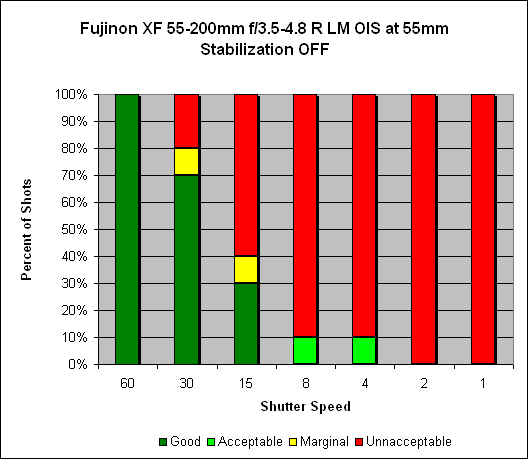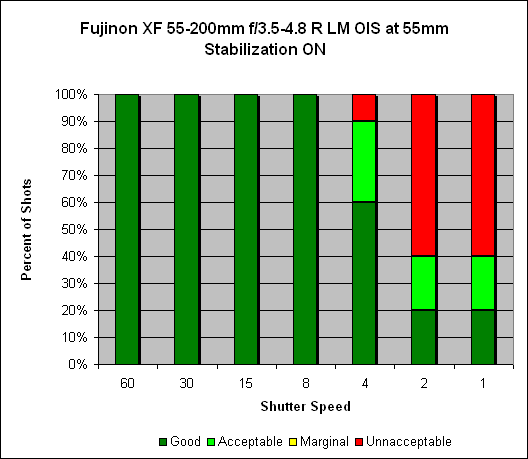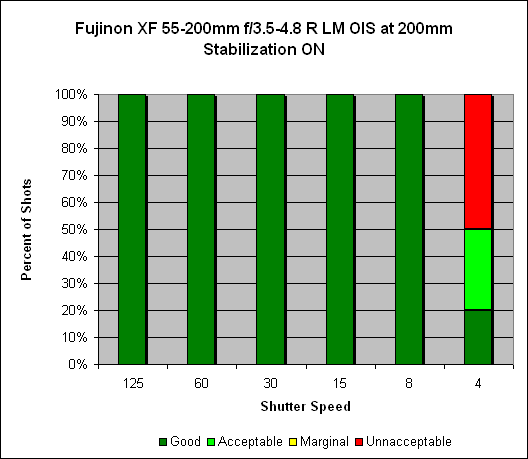Most people tend to think of image stabilization as being mainly for telephoto lenses. While it's true that their longer focal lengths tend to magnify the effects of camera shake, image stabilization can provde a very useful assist at wider angle focal lengths as well; anyone who's ever tried to blur the image of a waterfall, while keeping the surrounding landsape tack-sharp knows exactly what I'm talking about.
At 55mm, we see 100% sharp shots at the 1/60 mark with OIS disabled, which is what you'd expect with the one-over-focal length rule of thumb. Turn on OIS, and now we get 100% sharp shots hand-held at 1/8s, or an improvement of 3 stops (1/60 -> 1/30 -> 1/15 -> 1/8). Given that we also get 60% sharp shots at 1/4s, I'd even go so far as to say we get 3.5 stops of improvement.
 |
| Mouse over this chart to show results with IS activated. |
Zoomed in to 200mm, we see 100% sharp shots at the 1/125 mark with OIS disabled, which is better than you'd expect with the one-over-focal length rule of thumb (it "should" be 1/200s). Turn on OIS, and now we get 100% sharp shots hand-held at 1/8s, or an improvement of 4 stops (1/60 -> 1/30 -> 1/15 -> 1/8).
 |
| Mouse over this chart to show results with IS activated. |
IS systems tend to provide more benefit to less-stable shooters than very steady ones, so most users will see the same or greater amounts of shake reduction as we measured here. You can read more about our IS test methodology here: SLRgear IS Test Methodology, v2.

